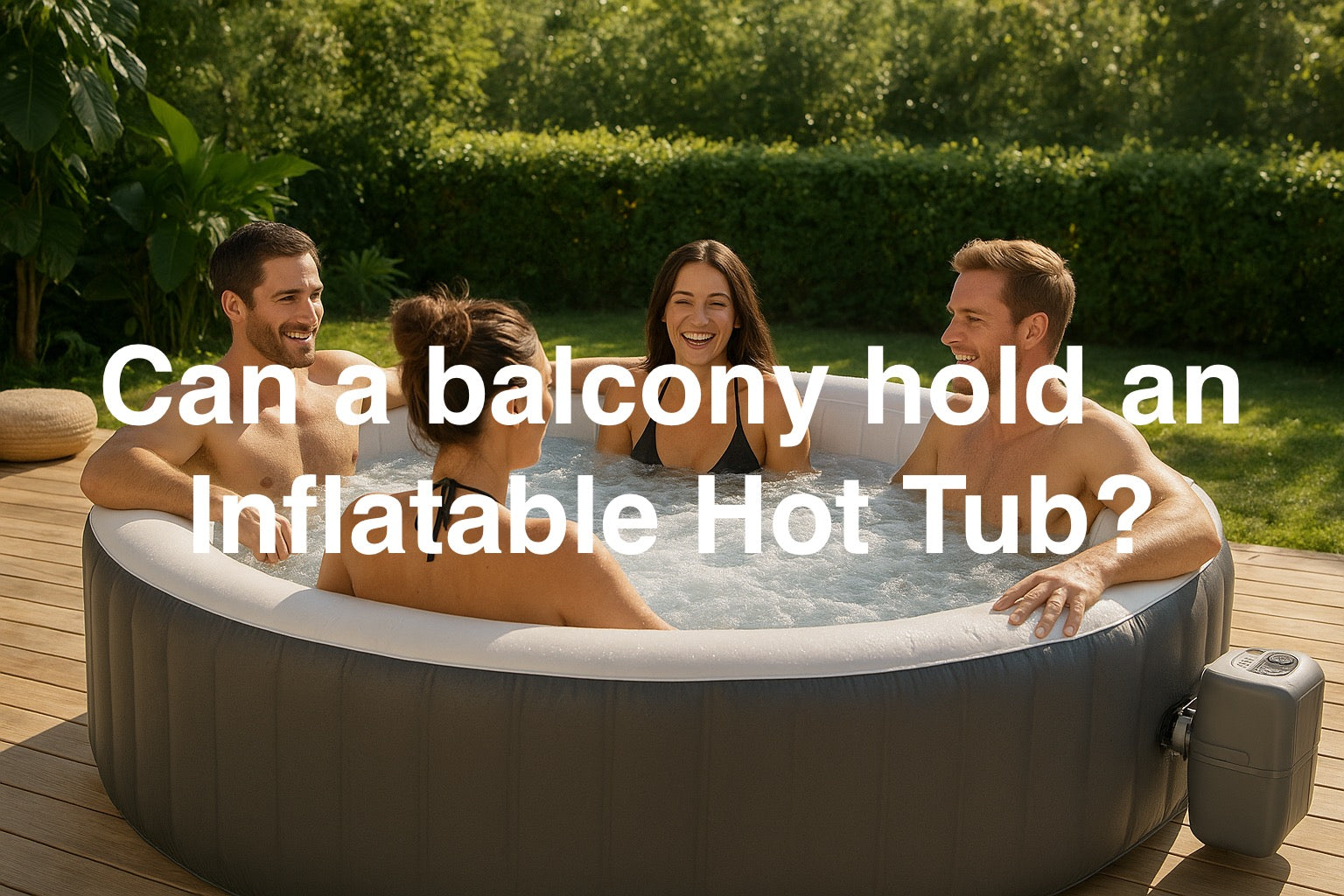
Can a Balcony Hold an Inflatable Hot Tub?
Ever dreamed of stepping onto your balcony, slipping into a bubbling spa, and pretending you’re on a luxury holiday? You’re not alone. Inflatable spas are tempting, but here’s the short answer: sometimes yes, but often no—it depends on the weight your balcony can handle. Stick around and we’ll break down the maths, safety checks, and smart alternatives so you can soak without stress.

The Big Question: Can Your Balcony Handle the Weight?
The Critical Calculation: Balcony Weight Limits
How to Find Your Balcony's Load Capacity
The first step is knowing exactly what your balcony can hold. If you’ve still got the building plans, check the load capacity—they often state how much weight per square metre your balcony can take.
If plans aren’t available, don’t guess. A structural engineer can quickly assess whether your balcony is up to the challenge. UK building regulations typically require residential balconies to support at least 3 kN/m², which translates roughly to 300 kg per square metre.
The Weight of an Inflatable Hot Tub: Full vs. Empty
An empty inflatable spa doesn’t weigh much—usually around 30–40 kg. The real problem is water. A typical inflatable spa holds 800–1,000 litres, which means an extra 800–1,000 kg once it’s full. That’s about the same as parking a small car on your balcony.
Don’t Forget the People and Water!
And of course, people aren’t weightless. Four adults can add another 300–350 kg easily. Add pumps, heaters, and covers, and the total weight can rise shockingly fast.
When you crunch the numbers, you’ll see why so many balconies simply aren’t built to handle the full load.
Beyond Weight: Other Safety Considerations
Structural Integrity and Building Codes
Even if the maths looks okay, check the condition of your balcony. Cracked concrete, sagging beams, or corroded railings are all red flags. UK building codes are strict for a reason—it’s about safety, not paperwork.
Water Drainage and Spills
Hot tubs and splashes go hand in hand. Without proper drainage, water can damage timber decking, stain concrete, or drip onto the neighbours below. Imagine the awkward conversation when the downstairs balcony ends up with a surprise shower.
Electrical Safety and Power Source
Inflatable spas need a safe, dedicated power supply. In the UK, this means a GFCI-protected socket (basically a trip switch for water safety). Never run long extension leads across your balcony—they’re a trip hazard and a fire risk.
Privacy and Noise Concerns
Let’s be honest—balconies aren’t the most private spots. Before you commit, think about how much your neighbours will hear when the bubbles (or the laughter) kick in. Privacy screens, pergolas, or even clever planting can help.

Step-by-Step: How to Safely Install a Hot Tub on Your Balcony
Before You Buy: Research and Permission
Talk to Your Landlord or Homeowners Association (HOA)
If you rent or live in a flat with shared rules, don’t skip this step. Landlords and HOAs often have strict bans on heavy installations like hot tubs.
Consult a Structural Engineer
Even if you own your home, it’s worth paying a professional for peace of mind. A quick inspection can save you thousands in repairs—or worse, an insurance nightmare.
Measure Your Space
It sounds obvious, but make sure the hot tub fits. Measure the balcony carefully, allowing room for people to get in and out safely without climbing over railings.
The Installation Process
Preparing the Balcony Floor
A flat, stable base is essential. Many owners use protective mats to prevent scuffs and spread the load. Think of it like putting a rug under heavy furniture—it protects what’s underneath.
Setting Up the Hot Tub
Inflatable spas are straightforward to set up. Unpack, inflate, and position it evenly on the surface. Check that nothing sharp is under the spa that could puncture it.
Filling and Heating
Here comes the heavy bit—literally. Fill with a hose, balance the chemicals, and prepare to wait. Heating can take hours, so plan ahead if you’re dreaming of an evening soak.
Smart Alternatives and Final Thoughts
What If My Balcony Can’t Hold It?
Smaller, Lighter Alternatives
If the numbers don’t add up, consider mini spa models or even inflatable foot spas. They give you the bubbles without the balcony stress.
The Ground-Level Option
If you’ve got a garden, patio, or decking, that’s often a far safer bet. The ground can take the weight far better than an elevated balcony.
The Takeaway: Prioritise Safety Above All Else
When in Doubt, Don’t Do It
It’s tempting to take shortcuts, but when it comes to tonnes of water suspended in the air, safety wins every time.
A Quick Checklist Before You Proceed
-
Have you confirmed your balcony’s load capacity?
-
Got written approval from your landlord or HOA?
-
Checked drainage, power, and neighbour concerns?
-
Spoken to a structural engineer?
If you can’t tick every box, it’s time to reconsider. But if you can, then you’re ready to enjoy your spa time—without risking your balcony.
Have you checked out our other posts?
Can You Put An Inflatable Spa On A Deck?
Do I Need To Put Anything Under An Inflatable Hot Tub?
Is It Safe To Put An Inflatable Hot Tub In The Garage?
Can An Inflatable Hot Tub Be In The Sun?
Where Is The Best Place To Put An Inflatable Hot Tub?
What Is The Best Thing To Put An Inflatable Hot Tub On?



Leave a comment